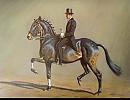Contact Seller
Studio RT Ltd
Tel01622 812556Please quote Antiques Atlas.


 Painting Nr Burnham Norfolk
Painting Nr Burnham Norfolk
 P. Martins - Pastel Study of a Cat
P. Martins - Pastel Study of a Cat
 Frederic Yates 1854-1919 WWI Portrait Major Smith
Frederic Yates 1854-1919 WWI Portrait Major Smith
 Thomas John Coates PPNEAC (1941–2023) – “Nude Bath
Thomas John Coates PPNEAC (1941–2023) – “Nude Bath
 Canadian landscape in pastel by Berthe des Clayes
Canadian landscape in pastel by Berthe des Clayes
 1945 Pastel Portrait Of A Young Girl
1945 Pastel Portrait Of A Young Girl
 A Pastel Portrait In The Manner Of Henry Raeburn.
A Pastel Portrait In The Manner Of Henry Raeburn.
 Still life pastel of roses by Lena M Alexander
Still life pastel of roses by Lena M Alexander
 Pastel With Carved Wooden Frame Depicting A Family
Pastel With Carved Wooden Frame Depicting A Family
 P. Harland Fisher 1867-1944 Pastel An Evacuee 1940
P. Harland Fisher 1867-1944 Pastel An Evacuee 1940
 Pair of Napoleon III pastels. France 19th century.
Pair of Napoleon III pastels. France 19th century.
 Grey Arab Stallion Horse Pastel Painting
Grey Arab Stallion Horse Pastel Painting
Non UK callers :
+44 1622 812556
General Sir Walter Braithwaite GCB Pastel Portrait


We are offering for sale this pastel portrait of the distinguished Army officer General Sir Walter Pipon Braithwaite GCB, by a British school pastellist in the Edwardian period. The artist is unknown. The General is wearing military uniform with his medal ribbons on his left breast. He has light brown hair and eyes, and a luxuriant moustache.
Walter Pipon Braithwaite was born on 11 Nov 1865, in Alne, North Yorkshire. His father William was a clergyman and his mother was Laura Pipon. There were 12 children, of which Walter was the youngest. He was educated at Victoria College between 1875 and 1880, and at Bedford School between 1880 and 1884. After Sandhurst he was commissioned into the Somerset Light Infantry in 1886. In 1895 he married Jessie Adine Ashworth (1869-1950) and they had one son, Lieutenant Valentine Ashworth Braithwaite MC, who was killed on the Somme on 1 July 1916 while serving with the Somerset Light Infantry at the age of 20. His body was mever recovered, but he is remembered on the Thiepval memorial. In 1921, His father erected a stone cross at about the spot where his son was killed marked on the base GOD BURIED HIM AND NO MAN KNOWETH HIS SEPULCHRE
He served in the Second Boer War, seeing action at Ladysmith, Spion Kop, Vaal Krantz and Tugela Heights He was mentioned in despatches three times and in a South Africa honours list received the brevet rank of major on 29 November 1900. Staying in South Africa until the war ended, he only returned to the United Kingdom on the SS Briton three months later in September 1902. After his return he was on in early October posted to Southern Command as a deputy assistant quartermaster-general on the staff of Sir Evelyn Wood, General Officer in Command of the 2nd Army Corps.In 1906 he transferred to the Loyal North Lancashire Regiment and was an instructor at the Staff College, Camberley being later appointed commandant of the Staff College, Quetta in British India, until it closed down in 1914. At this point, as the college was closed, he was again transferred to the War Office, this time as Director of Staff Duties
In WW1 he started badly but ended much better. His first posting was to the Dardanelles as Chief of Staff to Ian Hamilton. He was not well regarded by the Australians. One of their officers, John Gellibrand who Walter had taught at staff college was quoted as saying that Braithwaite was arrogant and incompetent, with the 'mind of a waiter' meaning that he was only anxious to please influential people. Hamilton, however, spoke well of him, referring to him as his 'rock'. The expedition was a failure and Braithwaite was recalled and sent to the Western Front in command of the 62nd (2nd West Riding) Division, made up of territorial units. They struggled to make headway in the Battle of Arras but the following year they repelled German advances at Bullecourt and Cambrai.
Braithwaite was given command of IX Corps and at the end of September 1918 they achieved a brilliant victory at Bellenglise. Haig ordered them to break through the Hindenburg Line despite previous unsuccessful effort by the Americans. The spearhead was led by the 46th (North Midland) Brigade who were required to swim across an ice-cold canal. The North Staffords overran the German machine-gun positions and 5,000 prisoners were taken. The division captured 1,000 machine-guns and Braithwaite basked in plaudits from Haig and other high-ranking generals.
After the war Haig commissioned him to prepare a report evaluating the performance of staff officers during the war.
He held various posts after the war, in India and in Britain. He was Adjutant-General to the Forces in 1927 and retired in 1931. The loss of his son, who had served in the Somerset Light Infantry, hit him hard and, having no heir, he burned all his family papers. He was appointed Colonel of the regiment on 30 July 1929 and was Governor of The Royal Hospital, Chelsea from 1931 to 38. In 1933 he held the post of King of Arms of the Order of the Bath until his death on 7 September 1945. He died at his home in Rotherwick, Hampshire and was buried in the cemetery of The Royal Hospital Chelsea, where his wife Jessie is also buried, after she died in 1950.
The pastel is under glass and is framed in what is its original ornate, pierced, swept, gilt frame. It will be supplied with new brass hangers, new brass picture wire and will be ready to hang.
Image size: 23 5/8 x 19 5/8 inches - 60cm x 49.8cm
Frame size: 31 1/2 x 27 1/2 inches - 80cm x 69.85cm
Medium: Pastels on paper laid to board
Condition: Very good. The portrait is in very good condition, as is the frame.
SellerStudio RT Ltd
View all stock from
Studio RT Ltd

 Private Art dealer
Private Art dealer
By appointment only
Kent
England, UK
Tel : 01622 812556
Non UK callers : +44 1622 812556
Walter Pipon Braithwaite was born on 11 Nov 1865, in Alne, North Yorkshire. His father William was a clergyman and his mother was Laura Pipon. There were 12 children, of which Walter was the youngest. He was educated at Victoria College between 1875 and 1880, and at Bedford School between 1880 and 1884. After Sandhurst he was commissioned into the Somerset Light Infantry in 1886. In 1895 he married Jessie Adine Ashworth (1869-1950) and they had one son, Lieutenant Valentine Ashworth Braithwaite MC, who was killed on the Somme on 1 July 1916 while serving with the Somerset Light Infantry at the age of 20. His body was mever recovered, but he is remembered on the Thiepval memorial. In 1921, His father erected a stone cross at about the spot where his son was killed marked on the base GOD BURIED HIM AND NO MAN KNOWETH HIS SEPULCHRE
He served in the Second Boer War, seeing action at Ladysmith, Spion Kop, Vaal Krantz and Tugela Heights He was mentioned in despatches three times and in a South Africa honours list received the brevet rank of major on 29 November 1900. Staying in South Africa until the war ended, he only returned to the United Kingdom on the SS Briton three months later in September 1902. After his return he was on in early October posted to Southern Command as a deputy assistant quartermaster-general on the staff of Sir Evelyn Wood, General Officer in Command of the 2nd Army Corps.In 1906 he transferred to the Loyal North Lancashire Regiment and was an instructor at the Staff College, Camberley being later appointed commandant of the Staff College, Quetta in British India, until it closed down in 1914. At this point, as the college was closed, he was again transferred to the War Office, this time as Director of Staff Duties
In WW1 he started badly but ended much better. His first posting was to the Dardanelles as Chief of Staff to Ian Hamilton. He was not well regarded by the Australians. One of their officers, John Gellibrand who Walter had taught at staff college was quoted as saying that Braithwaite was arrogant and incompetent, with the 'mind of a waiter' meaning that he was only anxious to please influential people. Hamilton, however, spoke well of him, referring to him as his 'rock'. The expedition was a failure and Braithwaite was recalled and sent to the Western Front in command of the 62nd (2nd West Riding) Division, made up of territorial units. They struggled to make headway in the Battle of Arras but the following year they repelled German advances at Bullecourt and Cambrai.
Braithwaite was given command of IX Corps and at the end of September 1918 they achieved a brilliant victory at Bellenglise. Haig ordered them to break through the Hindenburg Line despite previous unsuccessful effort by the Americans. The spearhead was led by the 46th (North Midland) Brigade who were required to swim across an ice-cold canal. The North Staffords overran the German machine-gun positions and 5,000 prisoners were taken. The division captured 1,000 machine-guns and Braithwaite basked in plaudits from Haig and other high-ranking generals.
After the war Haig commissioned him to prepare a report evaluating the performance of staff officers during the war.
He held various posts after the war, in India and in Britain. He was Adjutant-General to the Forces in 1927 and retired in 1931. The loss of his son, who had served in the Somerset Light Infantry, hit him hard and, having no heir, he burned all his family papers. He was appointed Colonel of the regiment on 30 July 1929 and was Governor of The Royal Hospital, Chelsea from 1931 to 38. In 1933 he held the post of King of Arms of the Order of the Bath until his death on 7 September 1945. He died at his home in Rotherwick, Hampshire and was buried in the cemetery of The Royal Hospital Chelsea, where his wife Jessie is also buried, after she died in 1950.
The pastel is under glass and is framed in what is its original ornate, pierced, swept, gilt frame. It will be supplied with new brass hangers, new brass picture wire and will be ready to hang.
Image size: 23 5/8 x 19 5/8 inches - 60cm x 49.8cm
Frame size: 31 1/2 x 27 1/2 inches - 80cm x 69.85cm
Medium: Pastels on paper laid to board
Condition: Very good. The portrait is in very good condition, as is the frame.
Price The price has been listed in British Pounds.
Conversion rates as of 11/DEC/2025. Euro & Dollar prices will vary and should only be used as a guide.
Always confirm final price with dealer. Sold. Sold prices are confidential, so please don't ask.
Category Antique Pictures / Engravings / Art
Date Edwardian
1910s Antiques Material Paper
Origin British
Item code as237a2425
Status Sold
£0 
$0.00 
€0.00 

$

€

Conversion rates as of 11/DEC/2025. Euro & Dollar prices will vary and should only be used as a guide.
Always confirm final price with dealer. Sold. Sold prices are confidential, so please don't ask.
View all stock from
Studio RT Ltd

 Private Art dealer
Private Art dealerBy appointment only
Kent
England, UK
Tel : 01622 812556
Non UK callers : +44 1622 812556
You may also be interested in
 Painting Nr Burnham Norfolk
Painting Nr Burnham Norfolk
 P. Martins - Pastel Study of a Cat
P. Martins - Pastel Study of a Cat
 Frederic Yates 1854-1919 WWI Portrait Major Smith
Frederic Yates 1854-1919 WWI Portrait Major Smith
 Thomas John Coates PPNEAC (1941–2023) – “Nude Bath
Thomas John Coates PPNEAC (1941–2023) – “Nude Bath
 Canadian landscape in pastel by Berthe des Clayes
Canadian landscape in pastel by Berthe des Clayes
 1945 Pastel Portrait Of A Young Girl
1945 Pastel Portrait Of A Young Girl
 A Pastel Portrait In The Manner Of Henry Raeburn.
A Pastel Portrait In The Manner Of Henry Raeburn.
 Still life pastel of roses by Lena M Alexander
Still life pastel of roses by Lena M Alexander
 Pastel With Carved Wooden Frame Depicting A Family
Pastel With Carved Wooden Frame Depicting A Family
 P. Harland Fisher 1867-1944 Pastel An Evacuee 1940
P. Harland Fisher 1867-1944 Pastel An Evacuee 1940
 Pair of Napoleon III pastels. France 19th century.
Pair of Napoleon III pastels. France 19th century.
 Grey Arab Stallion Horse Pastel Painting
Grey Arab Stallion Horse Pastel Painting








